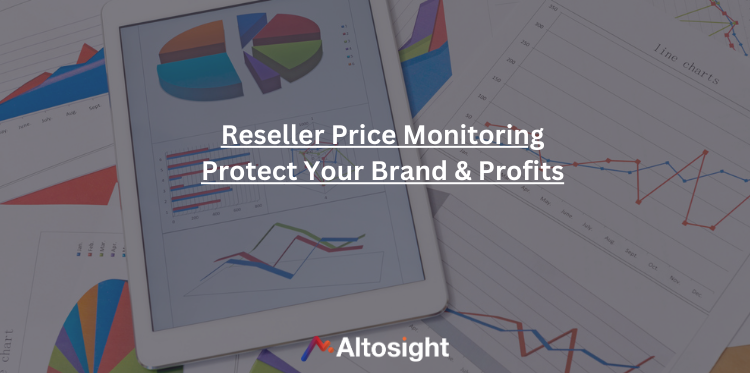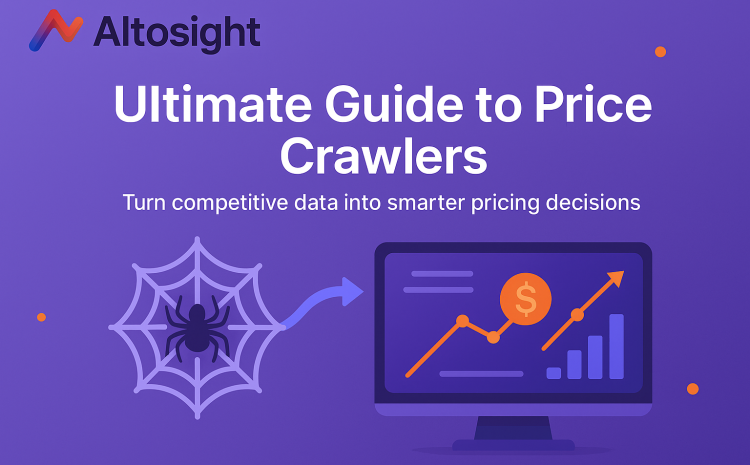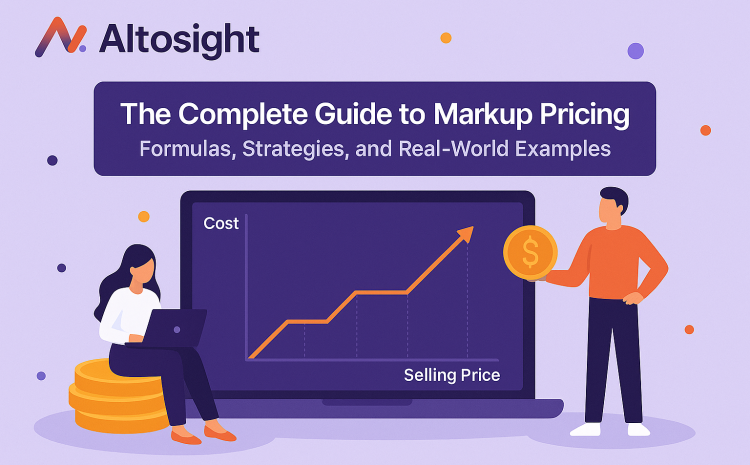
Keeping track of how your products are priced across numerous online channels is increasingly challenging for brands today. Reseller price monitoring has become imperative for controlling how products are priced and presented online.
The growth of eCommerce has led to widespread issues, including gray market imports, MAP violations and unauthorized resellers selling your products. These problems can quickly erode your brand value and damage relationships with authorized partners who follow your brand’s guidelines.
Today, we’ll cover everything you need to know about reseller price monitoring—from clear definitions and benefits to practical strategies, compliance tips and monitoring tools. Whether you’re new to retailer price monitoring or looking to improve your current approach, you’ll find actionable insights to protect your brand’s value.
What Is Reseller Price Monitoring?
Reseller price monitoring is your brand’s pricing oversight system. It involves systematically tracking how your products are priced across all distribution channels, particularly by third-party sellers.
Unlike general competitor price tracking, which focuses on similar products across the market, reseller price monitoring watches how authorized and unauthorized sellers price your products. Monitoring helps maintain brand integrity and prevents value erosion when your pricing strategy and MAP pricing face channel inconsistencies.
💡 Did You Know?
A consumer study from eMarketer in 2018 found that more than half of American clothing shoppers reported abandoning potential purchases in physical retail locations when they discovered that prices in-store didn’t match those online.
Who Needs Reseller Price Monitoring?
You likely need reseller monitoring if:
- Your products are sold through multiple third-party resellers or marketplaces like Amazon
- You’ve established MAP (Minimum Advertised Price) policies for your products
- Your business operates with tiered pricing structures across different channels
- Your products are sold below wholesale prices across various websites
Reseller monitoring becomes essential when your distribution network extends beyond direct sales. Companies in electronics, tools, fashion, beauty, sporting goods and luxury goods particularly benefit from implementing reseller-monitoring systems.
Why Reseller Price Monitoring Matters
Protecting brand value and margins is a big part of running a successful business. When resellers consistently violate your Minimum Advertised Prices, they affect more than just your profits—they undermine your entire brand positioning and your relationship with the rest of your partners.
Consumer research consistently shows that price and perceived quality are closely linked, meaning price erosion can damage your brand perception over time.
When consumers see identical products at significantly different price points, they naturally gravitate toward the lowest price, creating a downward spiral that becomes difficult to reverse. The long-term effect extends to your brand’s perceived value in the marketplace.
Ensuring Reseller Minimum Advertised Price (MAP) Compliance
Reseller MAP compliance means your selling partners adhere to your MAP policy. Violations often go undetected without consistent monitoring until they’ve already caused damage.
Pricing violations can occur from deliberate action and automated pricing tools or misunderstandings about policy requirements.
Regular monitoring enables you to identify issues before they spread across channels. When one seller lowers prices, others typically follow to remain competitive. It’s why early detection is so valuable.
🎯 Pro Tip
Consider creating a “compliance scorecard” for your resellers that tracks pricing adherence alongside other brand standards. This comprehensive approach positions MAP compliance as part of the overall partnership quality rather than an isolated enforcement issue.
Preserving Channel Relationships
Your authorized resellers invest significantly in representing your brand correctly, through trained staff, quality marketing and appropriate product presentation.
However, when unauthorized sellers or non-compliant partners undercut your MAP policy or potentially sell unauthorized products, they benefit from these investments while sabotaging the economic model that supports the partnership.
Significant price undercutting damages trust with your most valuable channel partners. They reasonably question why they should maintain pricing discipline when others don’t.
Without adequate monitoring, you lack the data to address these concerns and preserve these essential relationships.
Common Pricing Violations by Resellers
Knowing how resellers break pricing rules helps you spot problems quickly. Each type of violation affects your brand differently and requires specific solutions. Here are the most common pricing issues you’ll need to watch for.
Below-MAP Pricing
Minimum Advertised Price policies establish the lowest price at which resellers should advertise your products. However, resellers often find creative ways to circumvent MAP restrictions:
- “See price in cart” displays instead of actual prices
- Prices are shown only after login
- Site-wide percentage discounts
- Bundle deals that effectively lower per-item costs
All of the above represent common tactics. These violations often go undetected without systematic monitoring until they’ve already affected your broader pricing ecosystem.
Hidden Discounts or Dynamic Pricing Hacks
Some resellers maintain technically compliant advertised prices while using tactics that reduce the effective selling price behind the scenes. These include:
- Cart-only pricing (discount revealed after adding to cart)
- Email-only coupons triggered by browsing behavior
- Limited-time flash sales or member-only pricing
- Coupon stacking or bundled giveaways that effectively lower per-unit cost
While some of these promotions may be explicitly allowed or pre-approved by the vendor—especially during designated promotional periods—others may undermine MAP intent if used excessively or without authorization.
These gray-zone practices can be difficult to detect and enforce without advanced monitoring tools. A sophisticated solution can track not just displayed prices, but also value-added promotions and behavioral triggers that may impact your brand’s perceived pricing strategy.
🎯 Pro Tip
Include a clause in your MAP policy clarifying which promotional tactics require prior approval. For example, cart-only discounts or email promotions may be permitted only if pre-registered with your brand team.
Unauthorized Third-Party Listings
Gray market sellers who obtain products through unauthorized channels typically have no formal relationship with your brand and feel no obligation to follow pricing policies.
These unauthorized resellers frequently appear on marketplaces like Amazon and eBay, often with minimal overhead costs that allow them to undercut authorized partners and possibly ship faulty or unauthorized products.
Their presence creates pricing pressure across all channels, forcing compliant resellers to choose between losing sales or breaking agreements.
Key Benefits of Reseller Price Monitoring
| Benefit | Description | Business Impact |
| ✅ Channel-wide Pricing Consistency | Ensures consumers see similar prices regardless of shopping channel | Maintains brand positioning and reduces customer confusion |
| 🚨 Real-time Violation Detection | Identifies pricing issues before they spread across channels | Prevents price erosion and protects profit margins |
| 💰 Margin Protection | Stabilizes pricing across a distribution network | Maintains profitability for both brand and channel partners |
| 🤝 Distributor / Reseller Trust | Demonstrates enforcement fairness and consistency | Builds long-term partner loyalty |
| 📄 Enforcement Documentation* | Provides time-stamped evidence of pricing violations based on advertised prices | Enables consistent, fair, and compliant enforcement |
*Legal Note: MAP documentation itself is legal and recommended as part of a well-structured compliance process. However, brands should avoid tying enforcement to actual resale prices and always consult legal counsel—especially in jurisdictions like the EU where MAP enforcement may be considered resale price maintenance (RPM).
How To Monitor Reseller Prices
Choosing the right monitoring approach saves time and catches more violations. Your method determines how effectively you protect your pricing strategy. Here’s what you should know.
Manual Methods (and Why They Don’t Scale)
Many brands begin with manual monitoring methods, such as spreadsheets tracking key products, regular screenshots of product listings, and the manual effort of periodically checking prices.
While these approaches work for small brands with limited products and few resellers, they quickly become unmanageable as you grow. Manual monitoring has several limitations:
- Time-intensive
- Prone to error
- Reactive, not real-time
As your distribution network expands, these limitations become increasingly problematic.
💡 Did You Know?
Brands attempting to manually monitor more than 50 SKUs across 10+ resellers typically spend 15-20 hours weekly on monitoring alone, and their effectiveness diminishes as their product catalog expands.
Automated solutions can continuously monitor thousands of products across hundreds of sellers at a fraction of the cost, while freeing up valuable team resources.
Automated Monitoring Tools
Automated reseller monitoring tools, such as Altosight, regularly scan all the websites for your products, use pattern recognition to identify products even when listings change, flag pricing violations based on specific rules, send alerts when violations occur and generate reports showing pricing trends over time.
These tools scale with your business, allowing comprehensive monitoring regardless of how many products or channels you manage.
Integration with Enforcement and Legal Teams
Effective retailer price monitoring doesn’t exist in isolation—it connects with your enforcement workflow.
The monitoring data should feed directly into your compliance and legal processes through violation detection, automated alerts to team members, enforcement documentation, communication and resolution tracking, and analysis of compliance trends over time.
What To Look for in a Reseller Price Monitoring Tool
Not all monitoring solutions deliver the same results. The right tool can dramatically improve your ability to maintain consistent pricing across all channels. Focus on these essential capabilities.
Core Features
- Real-time monitoring provides up-to-date awareness of market conditions across all channels.
- Historical pricing data reveals patterns and helps identify seasonal trends or strategic moves by competitors.
- High product-matching accuracy and flexible detection methods that intelligently combine multiple data sources—ensuring reliable identification even when listings vary across platforms.
- User-friendly dashboards and widgets make data actionable and accessible to team members with varying technical expertise.
Advanced Capabilities
For more sophisticated monitoring needs, look for:
- Marketplace-specific tracking designed for Amazon, eBay, and other platforms
- MAP policy integration that automatically flags violations
- API or CRM integrations that connect monitoring with existing systems
- Automated enforcement communication
- Geographic / currency price variance tracking
These advanced features become increasingly valuable as your distribution network grows more complex.
🎯 Pro Tip
Before committing to a long-term contract, start with a free or paid trial. Reputable vendors often uncover pricing violations during the trial period—demonstrating real value and ROI even before full deployment.
Best Practices for Re-Seller Price Compliance
Legal and Regional Considerations
Disclaimer: This article is for informational purposes only and does not constitute legal advice. Brands should always consult with qualified legal counsel before implementing or enforcing any MAP policy.
MAP enforcement must comply with antitrust and competition laws. While maintaining pricing discipline is crucial for protecting brand equity, it must be done in a legally compliant manner. The specific legal boundaries differ significantly across regions, and brands should always consult legal counsel when creating or enforcing MAP policies.
In the United States, MAP policies are generally permitted under antitrust law, provided they regulate only the advertised price—not the actual resale price. This distinction is key.
A manufacturer may choose to stop doing business with a reseller who violates its MAP policy, but it must avoid price-fixing behavior, such as negotiating or mandating actual selling prices. Documentation, consistent enforcement, and a policy of non-retaliatory compliance messaging are vital for remaining within the legal safe zone. Educational outreach should be the first step when violations are detected.
In the European Union, resale price maintenance (RPM) is typically considered a per se violation of competition law. Even MAP policies, if aggressively enforced or used as a proxy to influence resale prices, can trigger legal scrutiny.
Brands operating in the EU must ensure that MAP policies do not coerce resellers or result in indirect pressure on final sale prices. Soft enforcement—like educational messaging and non-contractual guidelines—is often safer. Any attempt to limit pricing freedom must be vetted carefully by legal experts.
In APAC and other international regions, the legal treatment of MAP varies widely. Some countries, like Australia and Japan, may allow MAP under certain conditions, while others interpret it similarly to RPM. In these markets, it’s especially important to balance your MAP enforcement goals with a localized understanding of regulatory risk. Employing flexible, education-first strategies—paired with legal review—is the best way to avoid missteps.
To remain compliant globally, brands should:
- Consult legal counsel before rolling out or revising MAP programs, especially when expanding into new markets
- Define MAP policies clearly, focusing on advertised prices only
- Avoid discussing or influencing actual resale prices
- Apply enforcement consistently across all resellers
- Document all actions and communications
Onboard Resellers With Transparency
Prevention works better than enforcement. When onboarding new resellers, explain your pricing philosophy and why it matters, walk through specific policy requirements, provide examples of compliant and non-compliant pricing, introduce your monitoring program, and answer questions about implementation.
Respond to Violations Swiftly (But Professionally)
When monitoring identifies violations, verify the issue before taking any compliance enforcement action. Contact the reseller promptly with specific evidence and start with education rather than penalties for first offenses.
From there, follow a consistent escalation process for repeat violations and document all communications for potential legal needs.
Always check with your lawyer about the laws and regulations regarding enforcing resale price maintenance agreements and what enforcement actions are permitted in your jurisdiction.
Use Data to Start Strategic Conversations
Monitoring data provides an opportunity for productive discussions by showing violators specific examples with screenshots and timestamps, presenting pricing trends across channels to illustrate the problem, comparing compliant and non-compliant reseller performance, and discussing how pricing violations affect everyone in the channel.
Real-World Use Case: How Brands Use Reseller Monitoring to Win
A mid-sized electronics brand was facing significant price erosion on its flagship product line. Authorized retailers reported being consistently undercut by unknown sellers on marketplaces, forcing them to lower prices or lose sales. Margins were declining across all channels, and the brand’s premium positioning was gradually eroding.
Instead of waving the white flag, they implemented automated MAP monitoring. Within the first month, they discovered 37 unauthorized Amazon sellers listing their products, 22% of authorized resellers occasionally violating MAP policies, and systematic price-matching creating downward pressure across channels.
Monitoring gave them the power to be proactive rather than reactive. They sent cease-and-desist letters to unauthorized sellers, implemented a three-strike policy for authorized resellers and created a certification program for compliant partners.
Six months later, their average online price had increased by 12%, and authorized reseller satisfaction showed marked improvement. Most importantly, they regained control of their brand pricing in the marketplace.
💡 Did You Know?
When brands implement comprehensive reseller price monitoring, they typically see a 15-20% reduction in pricing violations within the first 15 days. This leads to an average margin improvement of 7-9% across channels, substantially impacting overall profitability.
Reseller Price Monitoring in 2025 and Beyond
Staying ahead of new pricing threats requires understanding future trends. The market continues to change, creating new challenges for brands. Consider these emerging issues.
Challenges Ahead
Monitoring is getting more complex. AI tools now help sellers change product descriptions to avoid detection systems. Many marketplace sellers run multiple storefronts, letting them continue selling even after you shut down one account.
Pricing algorithms have become more advanced, making real-time adjustments based on competition. Sellers create complex promotional deals that technically follow your rules while still undercutting prices. And cross-border selling lets retailers exploit price differences between regions.
These problems require smarter monitoring solutions.
What Brands Should Prepare For
Smart brands are adapting now. They’re building pricing strategies that work consistently across their own websites, wholesale partners and marketplaces.
Many brands are moving beyond basic MAP policies to create pricing models that reward loyal partners. They’re investing in better monitoring tools that spot pattern-based violations traditional systems would miss.
The most successful companies don’t view price monitoring as just a necessary task—they see it as a competitive advantage that protects both profits and market position.
Protect Your Brand Integrity and Margins With Altosight
Price monitoring matters. When resellers don’t follow your pricing rules, your brand value suffers, and loyal partners lose trust. Reliable monitoring gives you the visibility to spot problems and the evidence to fix them.
Brands that maintain consistent pricing stand out from competitors caught in endless price wars. They protect their margins and keep their positioning strong.
Start by looking at how you track prices today. Do you know what’s happening across all your sales channels? If you’re using spreadsheets or spot-checking, you’re probably missing violations.
Your brand’s value and profits depend on keeping pricing under control. Reseller price monitoring isn’t just a nice-to-have—it’s essential for staying competitive without racing to the bottom.
Want help tracking your re-sellers? Altosight can monitor thousands of listings across any website with real-time alerts, violation reports and reseller dashboards. Contact us to learn more or Book a Demo today!





